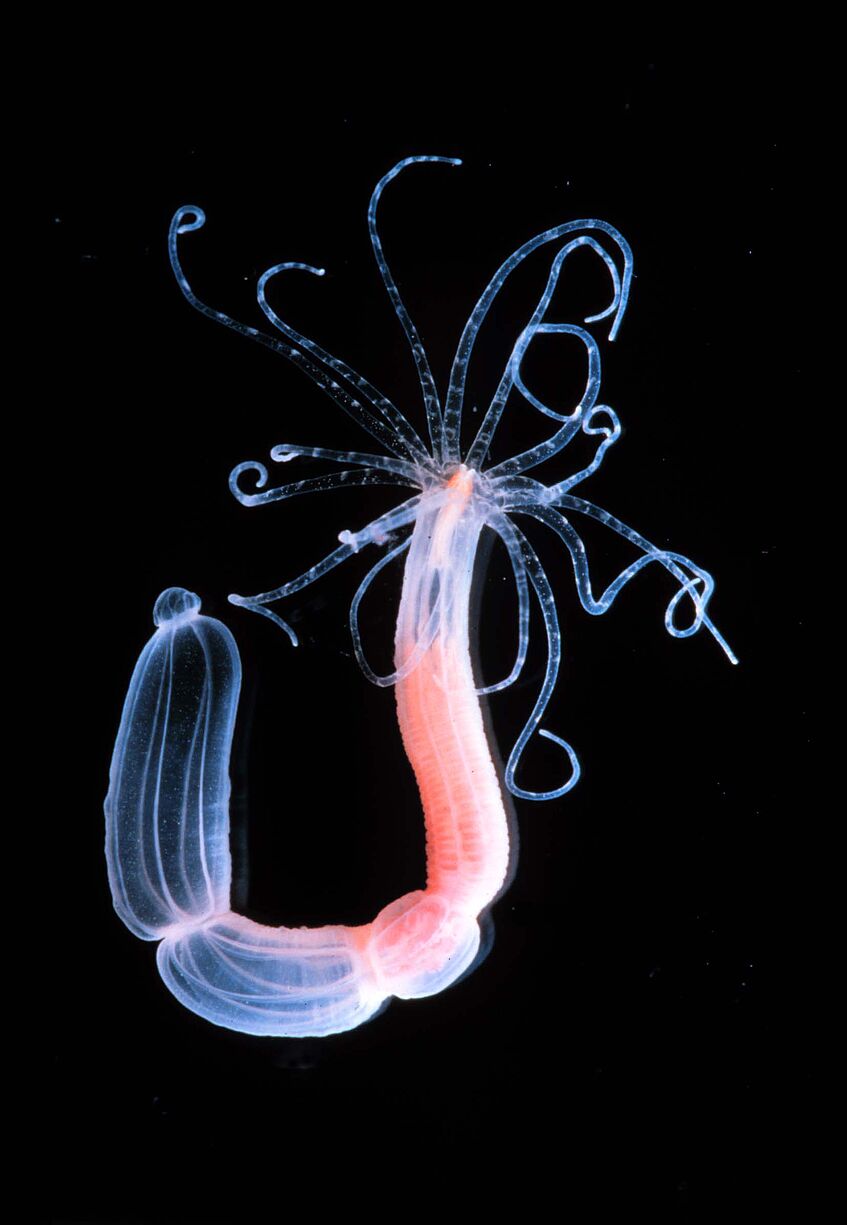
Prof. Ulrich Technau
Vice Head of Department
Division Molecular Evolution and Development
BioSketch
Team
Publications
Funding

Nematostella vectensis polyp

Nematostella vectensis polyp
Most extant animal lineages belong to the Bilateria, which have two body axes (anterior-posterior or head-tail and dorso-ventral or back-belly). They are also composed of three germ layers, ectoderm, endoderm and mesoderm, which are laid down early in development and of which all tissues and organs differentiate. Furthermore, most bilaterians are characterized by a central nervous system, e.g. brain, nerve cord and ganglia. Differentiation from stem cells assures the maintenance of neurons throughout the life of the organism.
Our model organisms to study the evolution of these fundamental body plan features are the Cnidaria (sea anemones, corals, jellyfish, hydras), which are considered to be the sister group of the Bilateria. The Cnidaria are thought to have arisen some 600 Mio years ago. They display one apparent body axis (oral-aboral), and consist of only two cell layers, called ectoderm and endoderm. They have a diffuse nervous system.
Hence, the question is, how this major transition from a diploblastic, radially symmetric animal such as the Cnidaria occurred to evolve the triploblastic bilaterally symmetric animals. Our approaches to these questions are comparative and functional genomics in combination with developmental biology: The sequenced genome of the sea anemone Nematostella vectensis revealed many genes usually associated with the formation of the two body axes, the three germ layers and the nervous system in Bilateria and we are now studying their function by means of overexpression, morpholino-mediated knockdown, CRISPR/Cas9 knockouts and transgenics.
Since the presence of these genes does not necessarily enforce the formation of the structure they are responsible for in bilaterians, the difference between cnidarians and bilaterians is likely in the gene regulatory network, both on the transcriptional level as well as on the post-transcriptional level. In order to address the question how gene regulatory networks could evolve, we established a number of molecular tools and genomic resources for Nematostella vectensis.
Key publications
Pukhlyakova, E, Aman, A and Technau, U (2019) b-catenin dependent mechanotransduction dates back to the common ancestor of Cnidaria and Bilateria. Proc Natl Acad Sci U S A, 115(24):6231-6236. doi: 10.1073/pnas.1713682115.
Kirillova, A, Genikhovich, G, Pukhlyakova, E, Demilly, A, Kraus, Y, Technau, U (2018). Germ layer commitment and axis formation in sea anemone embryonic cell aggregates. Proc Natl Acad Sci U S A, 115, 1813-1818.
Steinmetz, P.R.H.*, Aman, A., Kraus, J.E.M., Technau, U. (2017). Gut-like ectodermal tissue in a sea anemone challenges germ layer homology. Nature Ecol Evol. DOI: 10.1038/s41559-017-0285-5.
Moran, Y*, Agron, M, Praher, D and Technau, U (2017). Evolution of plant and animal miRNAs. Nature Ecol Evol. 1:27.
Genikhovich, G., Prünster, M.M., Fried, P., Schinko, J.B., Gilles, A.F., Weinberger, S.M., Iber, D., Technau, U.. (2015). Axis Patterning by BMPs: Cnidarian Network Reveals Evolutionary Constraints. Cell Reports pii: S2211-1247(15)00181-3.
Steinmetz, P.R.H., Kraus, J.E.M., Larroux, C., Hammel, J.U., Amon-Hassenzahl, A., Houliston, E., Wörheide, G., Nickel, M., Degnan, B.M., and Technau, U. (2012). Independent evolution of striated muscles in cnidarians and bilaterians. Nature, 487:231-4.
